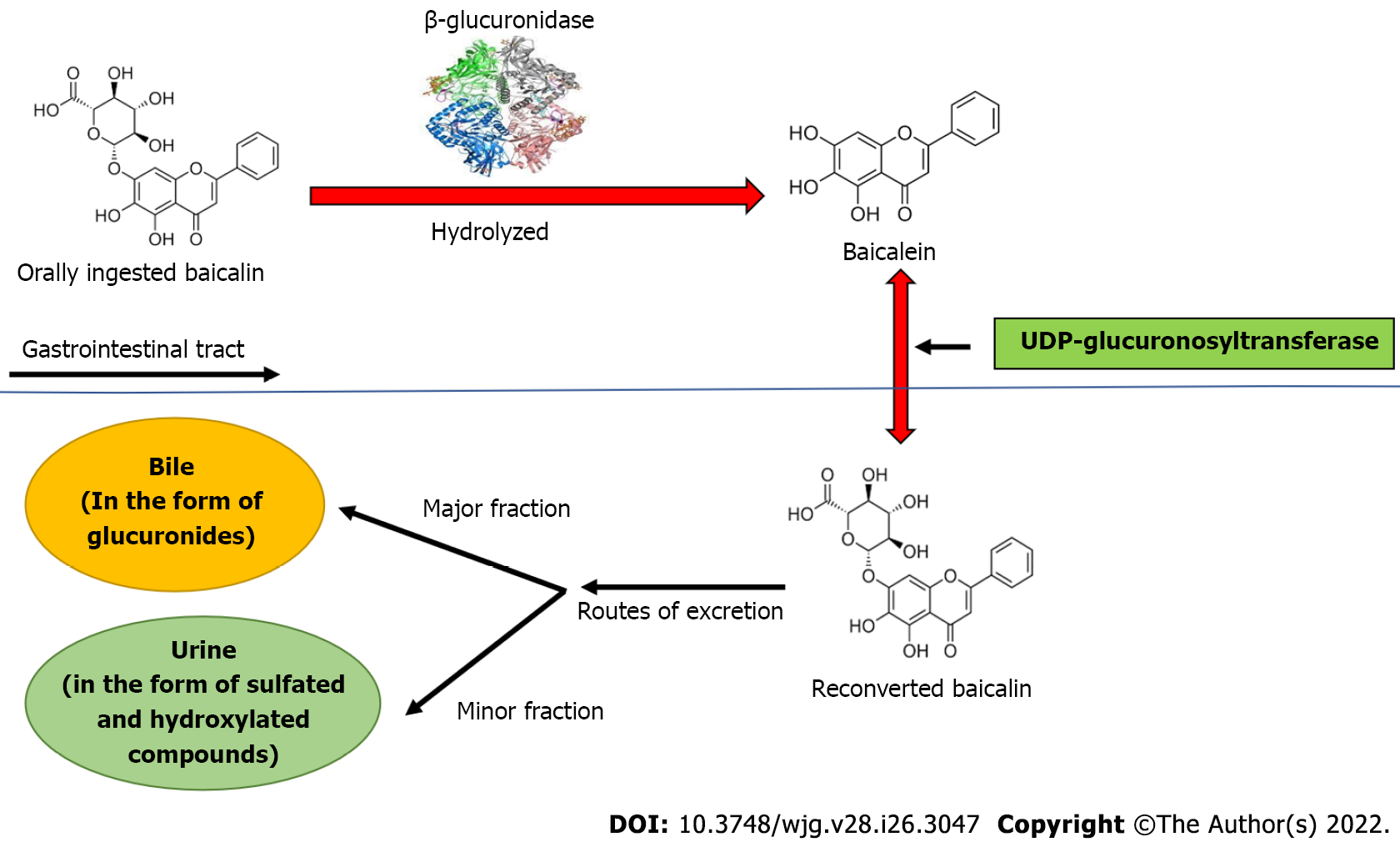Copyright
©The Author(s) 2022.
World J Gastroenterol. Jul 14, 2022; 28(26): 3047-3062
Published online Jul 14, 2022. doi: 10.3748/wjg.v28.i26.3047
Published online Jul 14, 2022. doi: 10.3748/wjg.v28.i26.3047
Figure 2 Biotransformation of baicalin after oral ingestion.
Orally administered baicalin is hydrolyzed to baicalein by β-glucuronidase. Further, baicalein is reconverted to baicalin by uridine 5'-diphospho-glucuronosyltransferase in intestine. The major part of baicalin excretion takes place via the biliary route in the form of glucuronides, and a small fraction of baicalin is excreted via urine in the form of sulfated and hydroxylated compounds. UDP: Uridine 5'-diphospho.
- Citation: Ganguly R, Gupta A, Pandey AK. Role of baicalin as a potential therapeutic agent in hepatobiliary and gastrointestinal disorders: A review. World J Gastroenterol 2022; 28(26): 3047-3062
- URL: https://www.wjgnet.com/1007-9327/full/v28/i26/3047.htm
- DOI: https://dx.doi.org/10.3748/wjg.v28.i26.3047









